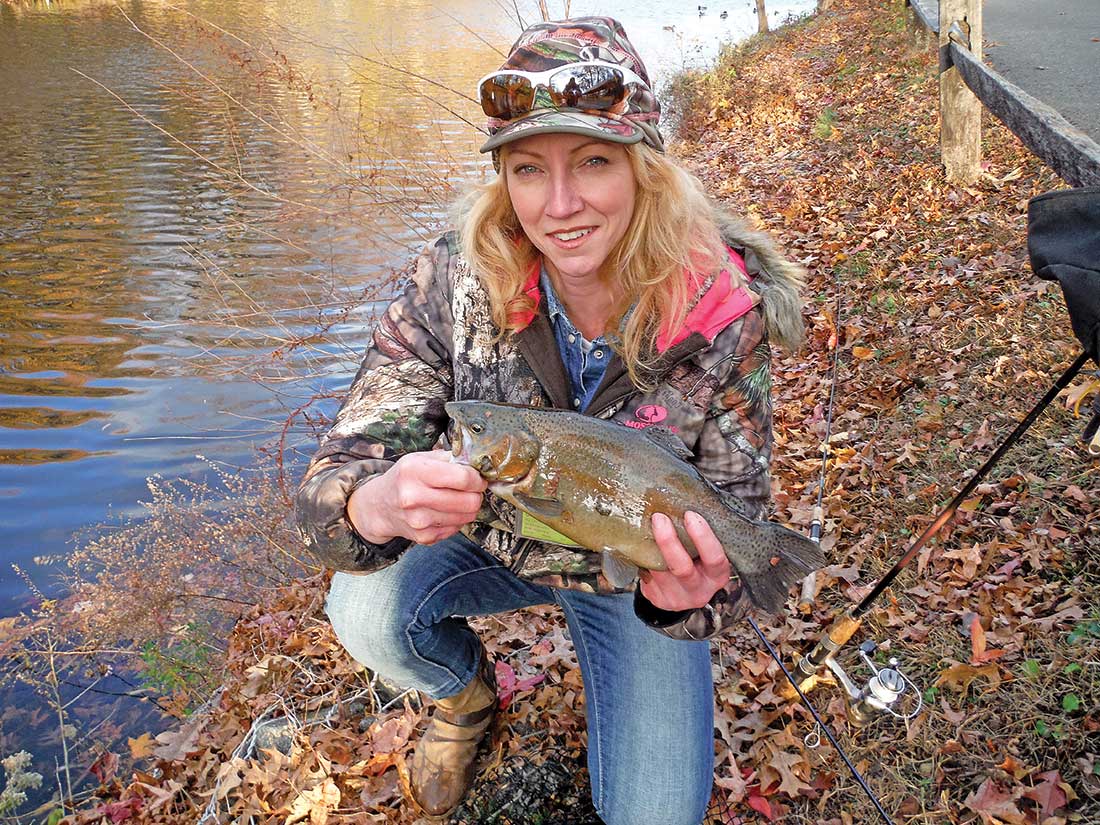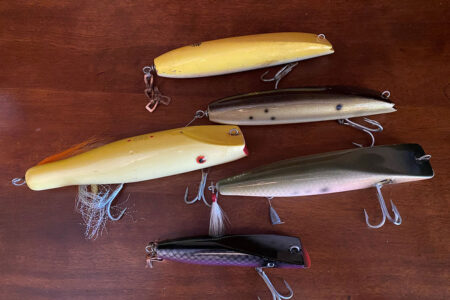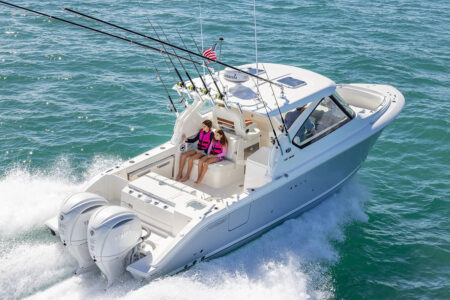
I am a true Southern girl; southern New Jersey that is. I do prefer the warmer weather and absolutely dread the cold; but that being said my love for fishing is greater than the temperature drop and ultimately I will tough it out to do what I love in the end, no matter what is tugging at my line.
Thus, this passion has inevitably inclined me to become a multi-species angler. Although bass fishing will always be my heart, there are certain things that I must accept, at certain times of the year when fishing gets notably tough and the bite winds down. In New Jersey, we are truly blessed with the number of freshwater species of fish that we can target. We have a wide enough variety to keep us casting year round; no need to pack it in after the fall bite has ended.
Winter is a great time to get acquainted with some of the other fish that our waters have to offer. The species that I like to target in winter include crappie, yellow perch, pickerel, trout, carp, and catfish.
When & Where
Winter can certainly be a very challenging time of year to fish. Many species’ metabolisms slow down and they don’t need to feed as much. Smaller lures and slow steady retrieves can trigger a bite that is perceived as an easy meal for lethargic fish. Weather fronts will continue to dictate how successful an outing will be as is the case any other time of year. You will still want to fish ahead of a cold front, of course that isn’t always plausible for those limited to fishing on our “off days” from work.
If you find yourself with no choice but to fish after a cold front has passed, concentrate on a sunny bank where water temperatures will be warmer and will attract fish. One benefit to winter fishing is that you don’t have to get to the water at the crack of dawn. You might find sleeping in can benefit both you and the fish you target. Water temperatures will rise with the sun.
In terms of location specifics, I suggest going to New Jersey Division of Fish and Wildlife to download a copy of Places To Fish. It will give you a detailed list of all public lakes, ponds, and reservoirs. Information includes species of fish and a scale system that ranks the bodies of water for the prevalence of each species within them. There are also lake surveys available for those that still have boats out or want to pick a prime spot to ice fish. The information can certainly still be useful to bank anglers as well.
Remember, your gear is just as affected by frigid temperatures as you are. Make sure your reels are winter ready by greasing them up and making sure the gears are in working order; you definitely don’t want it to fail when you are in the process of reeling in a catch. Line is notably susceptible to freezing when the weather takes an icy dip. Choosing a copolymer line as well as monofilament can be the key to reducing this issue. There are several line conditioners on the market that can keep your line from stiffening and twisting, as well as keeping ice from forming in your guides.
Protect yourself as well, with added layers, wool socks, fingerless gloves, and handwarmers to name a few things to keep you warm. Be prepared and you won’t call it quits before you get a bite.
Crappie & Perch
Crappie will remain active in the colder months, but their metabolism will slow down so they don’t need to eat as often. They will school together and if you can find them, you can catch them back to back when the bite is on. Typically, they can be found near structure such as trees, stumps, brush, or under docks and bridges. They will move shallow when there is a period of warmer weather. During these warming trends any structure that holds heat will become enticing to cold blooded fish including much sought after baitfish.
For panfish and trout I use a 6-foot light action spinning setup with 6-pound fluorocarbon line, whereas for pickerel, carp, and catfish I prefer a 7-foot medium spinning rod loaded with 12-pound mono. My most productive lure for casting at crappie is a 1/32-ounce jighead paired with a small plastic body in assorted colors and various body styles. One day they might prefer a curly tail chartreuse grub, the next a black minnow. Water conditions will play a big role in lure selection. Jigheads can be used with or without a float. Sometimes I drift a lure under a bridge without a bobber, sometimes I cast one out with a bobber near submerged stumps. I experiment until I figure out what they want. I have also had success using small spoons.

Of course live bait is always a crowd pleaser in the winter time. I prefer to use minnows over all other live bait for crappie; they can be very productive when lures aren’t getting a reaction.
Another fish that I have found myself catching in some of the same conditions as crappie are yellow perch, which are equally as fun to catch on light tackle. These aggressive panfish will attack live bait, spinners, spoons, and jigs. After the vegetation has died off these fish will move to deeper water and tend to hang near the bottom dwellers rather than suspending. They are usually within 100 feet of the shoreline and will move closer during periods of warmer weather in search of food as do most predatory fish. I prefer to fish open water as opposed to ice fishing for all of the fish that I target in winter. Some of the best fishing for yellow perch occurs in the weeks following the ice melt.
Pickerel & Trout
Pickerel are an obvious choice for cold water fish to target during winter. These toothy critters remain active in the coldest of waters. Live bait is once again an excellent choice if you can purchase or catch your own this time of year. Many bait shops will only have them available during their busy season, which usually winds down in fall and starts again in spring. Investing in a minnow trap is a great idea. Pickerel can also be caught on lures such as inline spinners, jerkbaits, jigheads, and soft plastics imitating baitfish. Good spots to scout for them include brush, logs, dying weedbeds, edges, spillways, or incoming creek mouths.
Trout are also a great wintertime fish in the Garden State. Native species can be found in the northern parts of New Jersey, but here in South Jersey we have stocked, farm-raised rainbow trout. These fish are produced by the Pequest Hatchery and released into selected lakes in the spring, fall, and winter. Being partial to cold water trout thrive in our area this time of year. Early morning and just before dusk you may see their telltale rises that give up their location. When first released, they tend to school up, most likely because of their close quarters at the hatchery. At this time, you can find yourself with quick limits as the fish haven’t wised up just yet. In the weeks following their release they tend to spread out a little more and move deeper as the temperature plummets.
Ice out is once again a good time to locate them. If you find a portion of ice still remaining in the deeper water simply casting near the edge of the ice tends to be a hot spot for trout. Jigheads paired with trout worms on a float work well for me as do inline spinners, small jerkbaits, spoons, mealworms, and doughbait on a size 12 treble hook suspending between 6 to 8 inches from a splitshot depending on the water depth.
Carp, Catfish & Bass
Carp are often thought of as a summertime catch, but the truth is they can be caught year round. Carp will remain nearby the same patrolling areas they frequented during more favorable times of the year. You may still notice their bubbles as they root around the bottom in search of food. Being close to shallows that feed warmer water into deeper water will be an excellent area to scout as well as the shallows themselves. They prefer to remain near areas that they feel can provide them safety, such as snags and cover.
Chumming the water with corn either prior to your outing or during can get the carp feeding in the area and more likely to pick up your bait. Doughbait, corn, mealworms, and boilies all still work well this time of year. If there is a significant current or even if I just want to add distance to my cast, I add a split shot to the line with a size 1/0 EWG worm hook. Set your rod down on a rodholder, loosen your drag, and hang a strike indicator from your line to detect subtle bites.

Another summer favorite is the catfish, which may also remain close to the same areas in winter that they may have inhabited during warmer times of the year. Having deeper water located nearby where they dwell is usually a permanent location for them. Depending on the conditions, they may make the move upstream to winter below a dam, or downstream to deeper water with a slow current. Bottom fishing cut bait, shrimp, corn, or live worms using a split shot rig with a size 5/0 circle hook is a good setup. You can set your rod down in the same fashion you would for carp fishing and wait for a bite.
While it definitely slows down for bass during the colder months, you can still catch them this time of year as well. They move deep in the winter, but remain near areas of quick transitions in depth. Bass tend to remain close to their spawning flats, so where you saw them bedding is most likely close to a deep drop-off and that is where they will be wintering. Areas where the fall bite was hot will also likely have deep water nearby that hold bass. Live bait is always the best choice for bass in winter as well as many other species. Lures that work well include, jigs, jigging spoons, hair jigs, blade baits, and jerkbaits all fished slowly.
Although all the species mentioned have varying levels of tolerance for the cold, they do share basic traits. They seek areas of cover, appreciate warning trends in the winter, and follow the baitfish. If you keep these things in mind and can brave the cold yourself, fishing doesn’t have to take a break. After all, it will give you something to do while you are waiting for spring to arrive.





